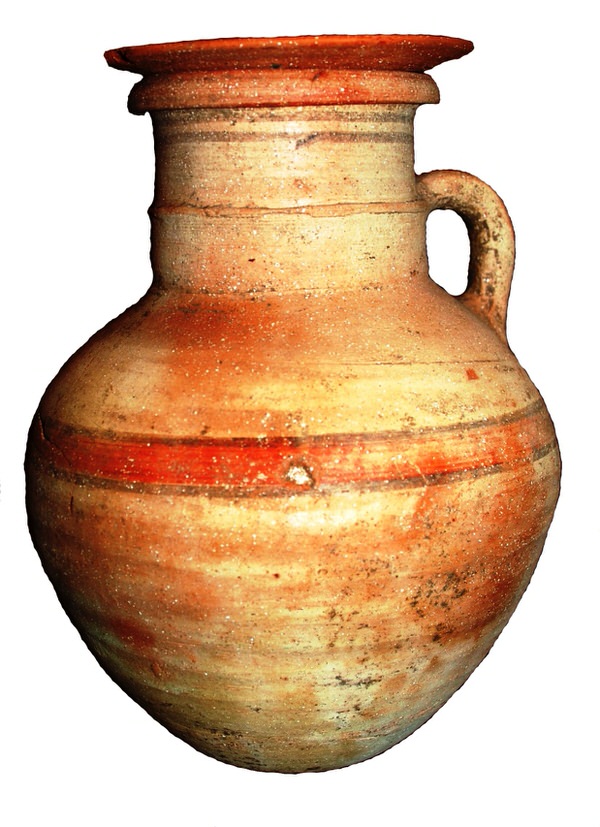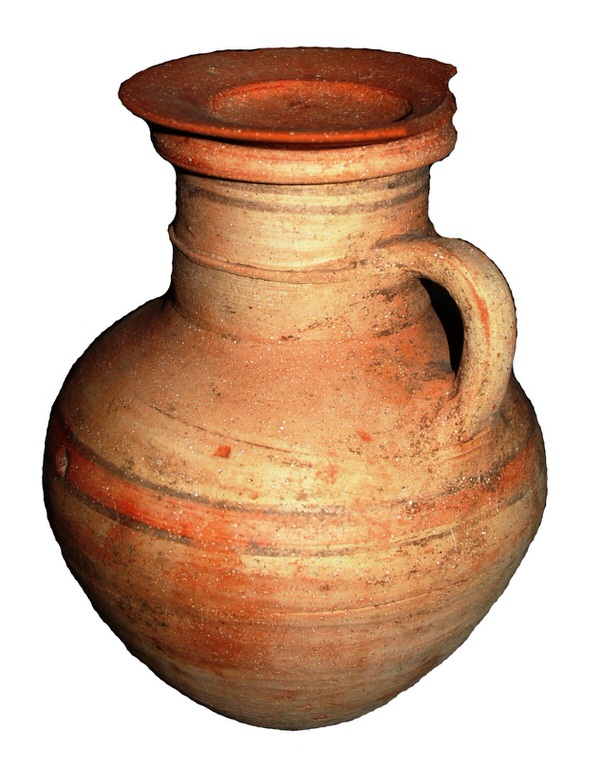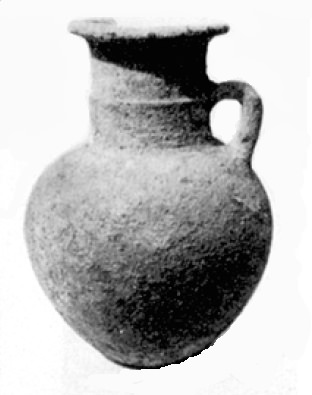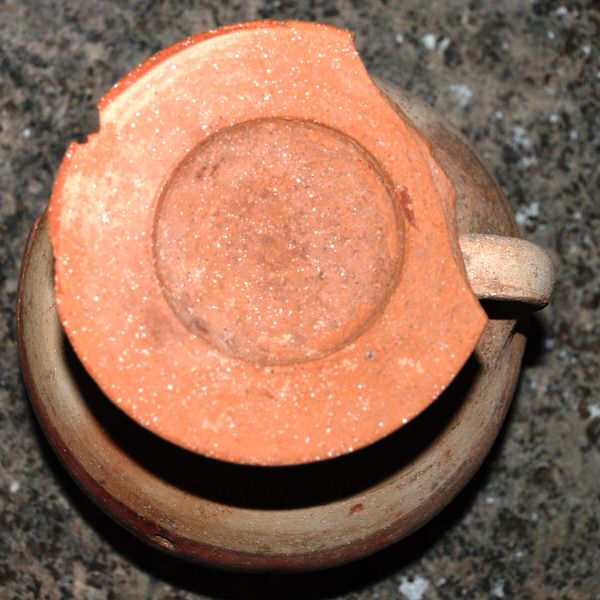Pitcher
Ashes from cremated people were placed in the Tharros tophet in various kinds of urn.
The oldest phase, that can be dated back to the final decades of the 7th century and the 5th century B.C. Is characterised by the frequent use of a particular shaped pitcher, described as a “round-necked pitcher with a step halfway up”; 211 of them were found in the 1971 digs alone (figs. 1-2)


This vase is the evolution of a Phoenician shape that is found from the 8th century B.C. Onwards (fig. 3) that always has no feet, the round neck with the step in it, a thick, overhanging brim; it has little, if no decoration, limiting itself to one or more bands of colour on the body (fig. 4); the oldest pieces have no decoration at all.

The pitcher, used as an urn, was usually covered with an umbilicate plate (fig. 5)


A more accurate dating of the one above (glimpse from the 7th-5th century B.C.) is not possible, due to the high nature of preservation of Phoenician and Punic ceramics, on which decorations and shapes on vases remain unchanged for a long period.
Bibliografia
- E. ACQUARO, Scavi al tophet di Tharros. Le urne dello scavo Pesce – I, Roma 1989
- A. CIASCA ET ALII, Mozia – VIII, Roma 1973

 VR
VR